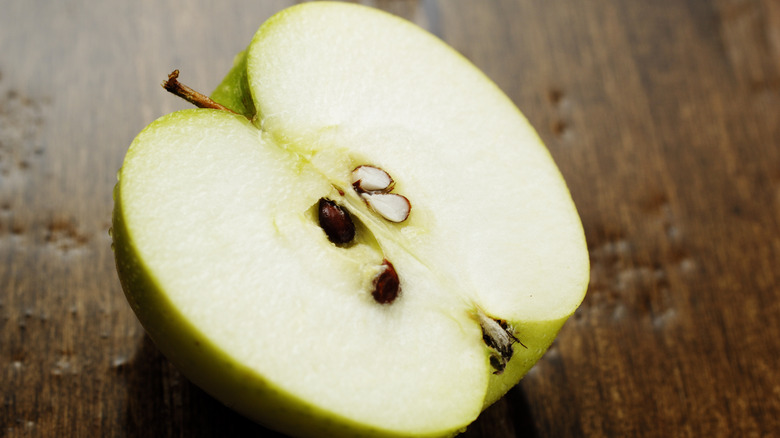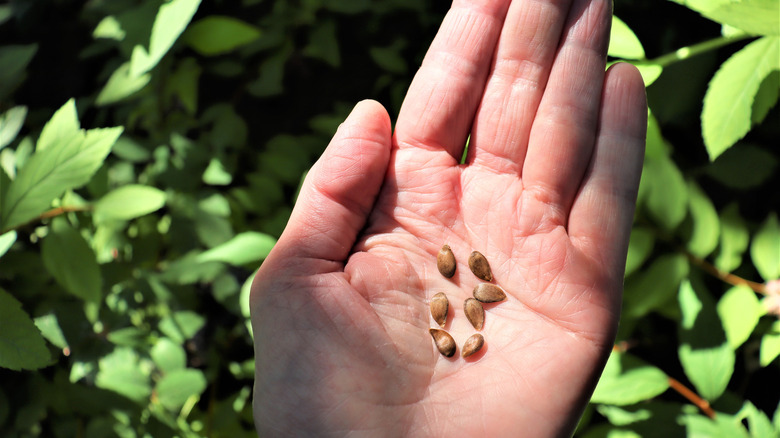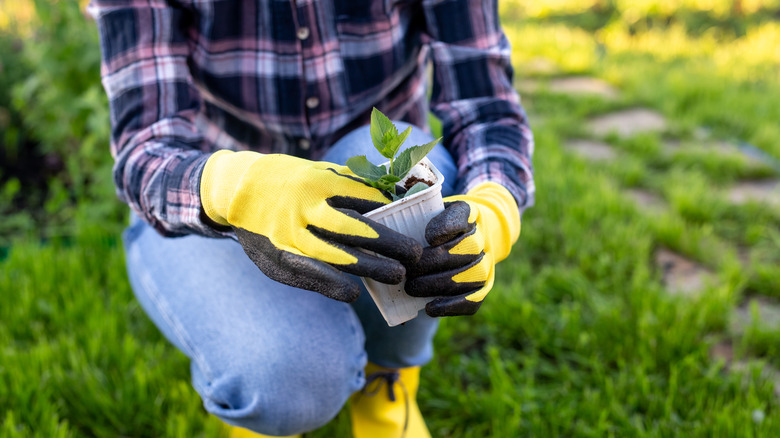How To Grow Apple Trees From Seed (& What Container To Use) Explained By An Expert Orchardist
Maybe this has happened to you, as it has to me. You eat a delicious apple. You think, hey, I'd love to grow a whole tree full of these apples! Then you think, hey, if I plant the seeds from this apple, that will work, right? Well, yes, but also no. Planting an apple seed won't produce the same type of tree that your delicious apple came from. In fact, apples from the new tree may not be delicious at all. But, you can still grow an apple tree from seed as a fun experiment and keep it going in a container until it is ready to transplant. This could be a fun activity for kids, and also for gardeners who are curious to see what kind of apples they get.
Even if the apples from your from your wild trees aren't as good as the apples the seeds came from, the trees will still produce pollinator-friendly blossoms, and fruit that's attractive to wildlife. Wild apples can be used to make fresh apple cider, and wild apple trees are great long-lived landscape trees that don't get too big. Growing apple trees in containers over the long term works best with dwarf trees. But if you're trying to grow an apple tree from seed, you won't necessarily get dwarf trees, so you'll eventually want to move the seedlings to an outdoor location once they're big enough. Starting your seeds indoors will give them a good start before transplanting them outside.
Why your apple tree won't be the same as the apple your seeds came from
Commercially grown apples are grafted onto crabapple tree rootstock. According to Iowa State University, apple trees don't actually grow "true" from seed. A seedling is not the same genetically as the original tree. The seedling tree may produce a wholly unique variety, which is often inferior to the parent"tree. But sometimes, a bit of magic occurs and a wild tree produces a wonderful apple. This is the story of the now popular apple Granny Smith apple, named for the New Zealand woman who discovered it in 1868. The bright green skin, crispy texture, and tangy flavor are loved by many consumers, and this variety is now grafted for commercial production. Many apples we now purchase in stores and at farmers' markets started out as one-off discoveries grafted and made popular by apple enthusiasts.
Some of the best heirloom apple trees to grow are from grafted trees, and they have withstood the test of time because of their superior genetic qualities. But don't discount the possibilities that can occur among wild apples, or those you plant from seed. I've tasted wild apples that were superb: crispy, juicy, and full of flavor. It will take a few years for your apple tree seedlings to grow large enough to produce fruit, so this activity involves plenty or patience, in addition to curiosity. The best time to plant your apple seeds is in spring.
Growing apple tree seedlings in containers
Like other seeds of cold-hardy trees, apple seeds need a period of cold dormancy before they sprout. This can be done using a cold seed stratification method: wrap them in slightly moist paper towels and keep in the fridge for six weeks. You can start them in small quart-sized containers (milk cartons work) with potting soil in a sunny window indoors. Once nights are consistently over 50 degrees Fahrenheit, you can move the seedling containers outside to a sunny location. Water them regularly as you would other seedlings. In the woods where wild apples grow, seeds that survive the winter and aren't eaten by wildlife will sprout where they land.
But over time they may not get enough sunlight to survive. Starting seeds in containers and choosing a sunny spot with fertile soil gives you an edge over nature's random methods. Give your trees room to grow: some wild apple trees can grow over 30 feet! But most reach between 15 to 20 feet at maturity. If you're planting multiple trees, plant them at least 15 feet apart. Once your container seedlings are at least six inches tall, you can plant them in the ground. Mark them with small stakes so they don't get trampled on. Provide trees with winter protection from nibbling animals and frost — I find burlap sacks do the trick. Wild apple trees grow quickly, so prune them regularly to give them a good shape as they're growing.


